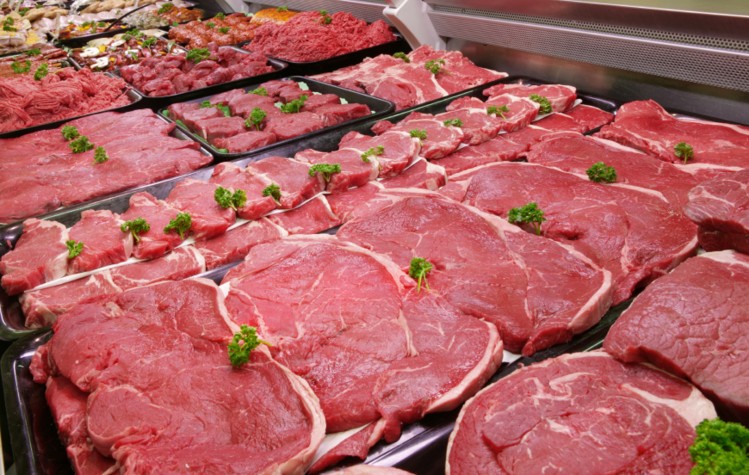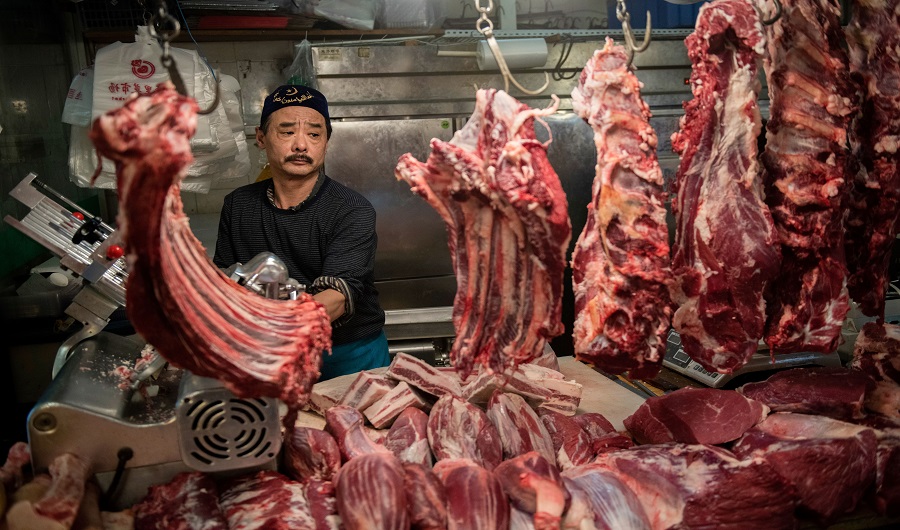Pakistani beef to meet demands of Chinese market

BEIJING: As China has a supply gap of beef and Pakistan has sufficient capacity, efforts are being made for Pakistani beef to enter into the Chinese market and grab a sufficient place of the product opening a wide opportunities of export to the neighbouring country.
China is a large meat importer of beef. In 2020, China’s beef production reached 6.72 million tons, and the import volume reached to 2.1183 million tons with an increase of 27.65 percent, setting the beef import record. At the same time, China’s chicken import volume nearly doubled as compared with that in 2019.
 China’s annual output of beef and mutton added up to 10 million tons, said Li Jinghui, Deputy Secretary General of China Animal Agriculture Association and President of
China’s annual output of beef and mutton added up to 10 million tons, said Li Jinghui, Deputy Secretary General of China Animal Agriculture Association and President of
White-feathered Broiler Alliance. He added, “China’s per capita output is a few kilograms, which fails to meet domestic needs. That’s why there are millions of tons of imports”.
China is a major meat importer while animal husbandry plays an important role in the economy of Pakistan, yet annual meat trade between the two countries is very small. So far, China has not opened the door of Pakistani beef import, as Pakistan is still on China’s
“List of Animals and Their Products in the Countries and Regions with A Prevalent Animal Epidemic Situation Banned for Entry,” according to a report published by CEN.
In 2019, China and Pakistan signed the Foot-and-Mouth Disease Free Zone Agreement. Pakistani government is undertaking a vaccination programme to address the FMD issue. In this way, Pakistan is expected to move from the World Organization for Animal Health (OIE)’s Stage-2 category for countries (in which FMD is reduced to target areas) to Stage-3.
The Chinese research institutions are providing Pakistan with state-of-the-art technology, said He Cheng, a professor at China Agricultural University’s College of Veterinary Medicine.
He added, “With vaccines and training personnel, Pakistan can produce certified and FMD free meat and dairy products, which is our goal”.
On the site selection of FMD free zone, Shen Jing, Deputy General Manager of QYH Biotech, with China Animal Husbandry Industry as its shareholder, revealed that they plan to build the FMD free area in either Balochistan province or Punjab province, and carry out the construction with the support of Chinese customs and quarantine agencies.
At the same time, he said they would further explore the possibility of information and personnel exchange, promote the use of vaccines and the establishment of standards, and advance the mutual recognition of standards.
Food and fodder should go ahead of troops and horses. Vaccine is a key element in the construction of FMD free zone. At present, the FMD vaccines, approved by Drug Regulatory Authority of Pakistan, mainly comes from China, Russia and Western Europe.
Masood Rabbani, Vice Chancellor of University of Veterinary and Animal Sciences (UVAS), proposed an idea to realize the localization of FMD vaccines with the help of China.
“We have a vaccine research institution in Pakistan, and we can accept investment from Chinese enterprises to build processing facilities to produce foot-and-mouth disease vaccine,” he said.
As an enterprise exporting FMD vaccines to Pakistan in 2019, Shen Jing also plans to bring Chinese vaccine technology to Pakistan. “We will build a veterinary vaccine factory in Gwadar Port, Pakistan. The annual output of foot-and-mouth disease vaccine is expected to be 700 million doses. It is not only used in Pakistan, but also exported to the Middle East and South Asian countries.”
Gwadar Port sits at the southern end of China-Pakistan Economic Corridor. As a Chinese enterprise deeply involved in Gwadar Port, Zhang Baozhong, the chairman of China Overseas Ports Holding Company, put forward a new idea.
He suggested that China and Pakistan make decisions as soon as possible and take Gwadar Port as a green channel for agricultural cooperation. “That is to say, we can carry out corresponding inspection and quarantine in Gwadar Port. After the products are transported to Chinese ports, no further inspection and quarantine is required. In this way, these goods can reach Chinese consumers directly.”







